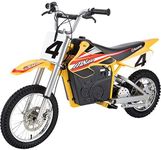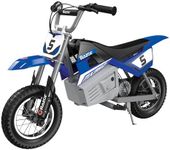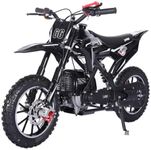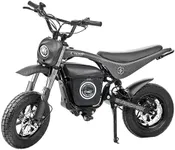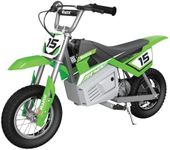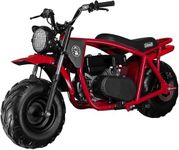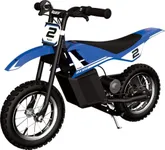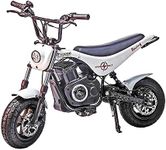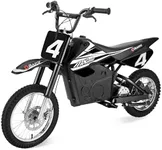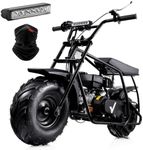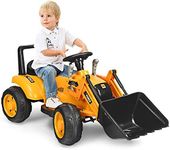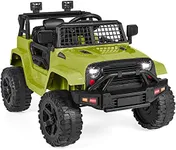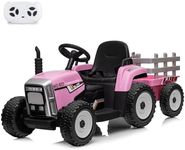Buying Guide for the Best Mini Dirt Bikes
Choosing the right mini dirt bike can be an exciting yet challenging task, especially if you're new to the world of off-road riding. Mini dirt bikes are smaller versions of full-sized dirt bikes and are designed for younger riders or beginners. They offer a great way to learn the basics of riding and develop skills in a controlled and safe manner. When selecting a mini dirt bike, it's important to consider several key specifications to ensure you get the best fit for your needs and riding style. Here are the main specs to look at and how to navigate them.Engine SizeThe engine size of a mini dirt bike is measured in cubic centimeters (cc) and determines the bike's power and speed. Smaller engines, such as 50cc to 70cc, are ideal for young children and beginners as they provide manageable power and are easier to control. Mid-range engines, like 80cc to 110cc, offer a bit more power and are suitable for older kids or those with some riding experience. Larger engines, from 125cc and up, are best for teenagers or adults who have more experience and are looking for higher performance. Choose an engine size that matches the rider's age, experience level, and intended use.
Seat HeightSeat height is the distance from the ground to the top of the seat and is crucial for ensuring the rider can comfortably reach the ground with their feet. A lower seat height, typically around 18 to 24 inches, is suitable for younger or shorter riders, providing them with better stability and control. Taller riders or those with longer legs may need a seat height of 24 inches or more. To find the right seat height, have the rider sit on the bike and ensure they can touch the ground with the balls of their feet or flat-footed for maximum control and confidence.
WeightThe weight of a mini dirt bike affects its handling and ease of use. Lighter bikes, usually weighing between 50 to 100 pounds, are easier for younger riders to maneuver and control. Heavier bikes, which can weigh over 100 pounds, may offer more stability and durability but can be more challenging for beginners to handle. Consider the rider's strength and ability to manage the bike's weight when making your choice. A lighter bike is generally better for beginners, while more experienced riders may prefer the added stability of a heavier bike.
TransmissionMini dirt bikes come with either automatic or manual transmissions. Automatic transmissions are easier for beginners to use as they don't require shifting gears, allowing the rider to focus on learning to balance and control the bike. Manual transmissions, which require the rider to shift gears, offer more control and can be more engaging for experienced riders. If the rider is new to dirt biking, an automatic transmission is a good starting point. For those with more experience or who want to learn how to shift gears, a manual transmission can provide a more challenging and rewarding experience.
SuspensionSuspension refers to the system of springs and shocks that absorb bumps and impacts while riding. Good suspension is important for a smooth and comfortable ride, especially on rough terrain. Basic suspension systems are suitable for casual riding on flat or mildly uneven surfaces. More advanced suspension systems, with adjustable settings, are better for aggressive riding and tackling rougher trails. Consider the type of terrain the rider will be on most often and choose a suspension system that matches their needs. For beginners, basic suspension is usually sufficient, while more experienced riders may benefit from advanced suspension features.
BrakesBrakes are a critical safety feature on any mini dirt bike. There are two main types of brakes: drum brakes and disc brakes. Drum brakes are typically found on entry-level bikes and provide adequate stopping power for beginners. Disc brakes, which offer better performance and stopping power, are found on higher-end models and are preferred for more aggressive riding. Ensure the bike has reliable brakes that match the rider's skill level and the type of riding they will be doing. For beginners, drum brakes are usually sufficient, while more experienced riders may prefer the enhanced performance of disc brakes.
